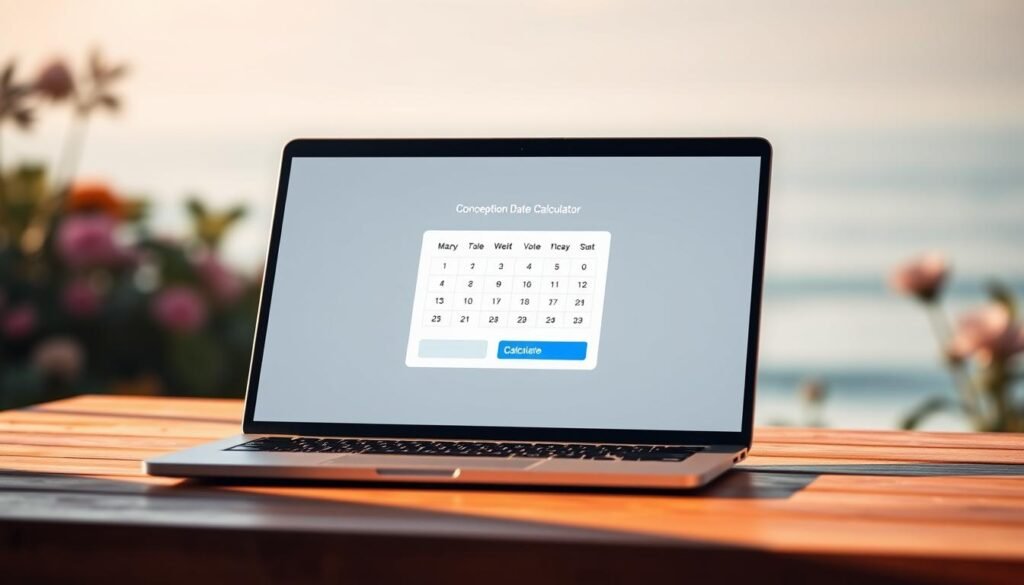Understanding when pregnancy began is crucial for expectant parents. A conception calculator is a valuable tool that helps determine the date of conception, providing insights into the pregnancy timeline.
While a due date calculator estimates when the baby is due, a conception calculator focuses on when the pregnancy actually occurred. Knowing the conception date is essential for medical purposes, personal planning, and understanding the pregnancy progression.
Typically, conception occurs 10-14 days after the first day of the last menstrual period. Using a conception calculator can help expectant parents understand their pregnancy better and plan accordingly.
Key Takeaways
- Conception calculators help determine the date of conception.
- Knowing the conception date is crucial for medical purposes and personal planning.
- Conception typically occurs 10-14 days after the first day of the last menstrual period.
- Conception calculators provide valuable insights into the pregnancy timeline.
- Understanding conception dates can help with pregnancy planning.
Understanding Conception Calculators
Understanding conception calculators is essential for anyone trying to conceive or curious about their pregnancy. Conception calculators are designed to estimate when fertilization occurred, providing valuable insights into the pregnancy journey.
What Is a Conception Calculator?
A conception calculator is a digital tool that helps determine when fertilization likely occurred based on various inputs like last menstrual period (LMP), known ovulation date, or ultrasound measurements. It’s different from a due date calculator, although they use similar data points. Conception typically occurs around 11-21 days after the first day of the last period in women with regular cycles.
Why Knowing Your Conception Date Matters
Knowing your conception date is crucial for medical accuracy, understanding fetal development timelines, and addressing questions about paternity. It can also help with pregnancy planning by identifying fertile windows and optimal conception timing. Moreover, understanding when conception occurred can create an emotional connection to the pregnancy, allowing parents to commemorate or reflect on when their baby’s life began.
- Conception calculators provide estimates rather than exact dates, as pinpointing the exact moment of conception is nearly impossible without advanced medical procedures.
- These calculators can help women with irregular periods or those who don’t remember their LMP to estimate their conception date.
- The scientific definition of conception involves both fertilization and implantation, which typically occurs 6-12 days after ovulation.
By understanding how conception calculators work and their limitations, expectant parents can better navigate their pregnancy journey. While the exact date of conception may remain uncertain, these tools offer a valuable estimate that can inform pregnancy decisions and foster a deeper connection to the developing fetus.
How Conception Calculators Work
Understanding how conception calculators work requires a look into the biological and mathematical processes they employ. Conception calculators are designed to estimate the date of conception based on various inputs related to a woman’s menstrual cycle or pregnancy.
The Science Behind Conception Timing
Conception refers to the process of becoming pregnant, involving fertilization and implantation of the fertilized egg into the uterine wall. Sperm can survive for up to 5 days in the female reproductive tract, waiting for an egg to be released. This biological window is crucial for conception calculators to estimate the conception date.
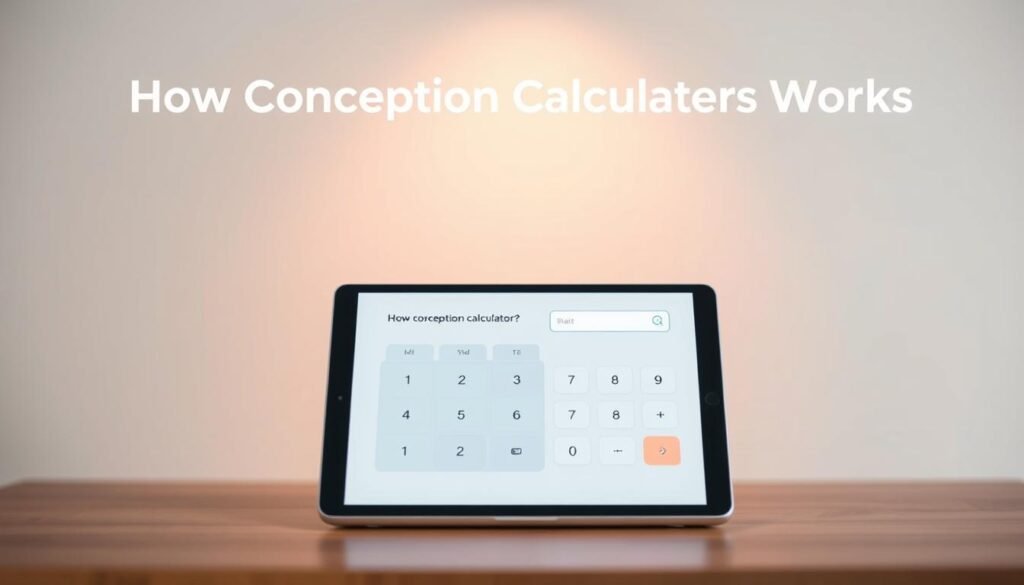
Relationship Between Conception and Due Dates
The standard pregnancy duration is considered to be 40 weeks from the last menstrual period (LMP), while the actual gestation period from conception is approximately 38 weeks. Conception calculators use this information to estimate the due date by adding or subtracting the appropriate number of days from the conception date or LMP.
| Method | Weeks | Description |
|---|---|---|
| LMP | 40 weeks | Standard pregnancy duration from last menstrual period |
| Conception | 38 weeks | Actual gestation period from conception |
Accuracy Considerations
Factors such as irregular menstrual cycles, mistaken period dates, and variations in ovulation timing can affect the accuracy of conception calculators. These calculators often account for the fertile window, a 5-6 day period during which conception is possible, rather than pinpointing a single day.
By understanding these factors and using mathematical formulas based on average cycle lengths and gestational development, conception calculators can provide a range of possible conception dates to account for biological variables.
Calculating Conception Using Your Last Menstrual Period
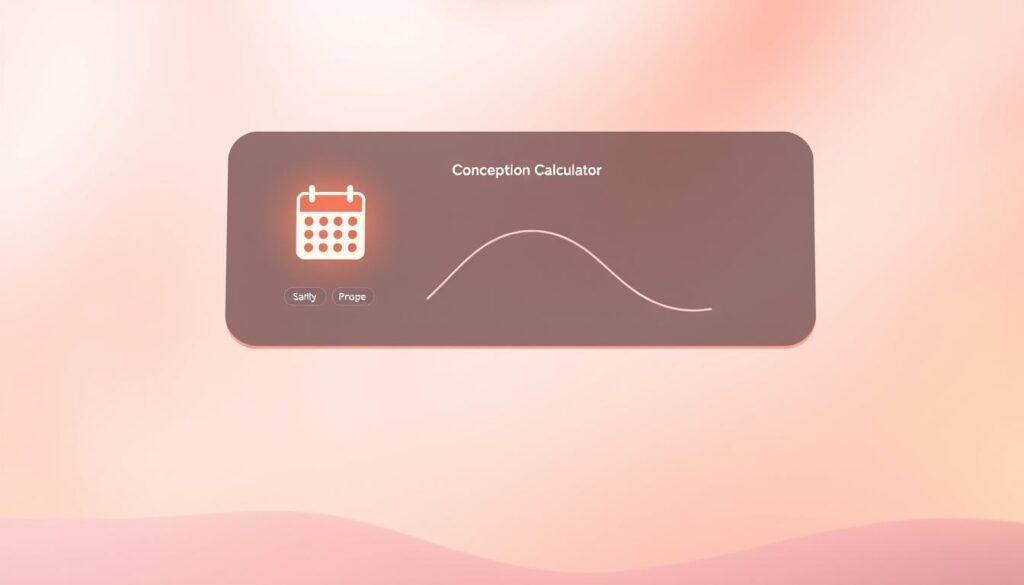
Calculating your conception date can be a straightforward process if you know the first day of your last menstrual period. Most pregnancies last around 40 weeks, or 280 days, from the first day of the last menstrual period (LMP). This method assumes a regular 28-day menstrual cycle, with ovulation occurring on day 14.
Step-by-Step Instructions
To calculate your conception date, follow these steps:
- Identify the first day of your last menstrual period.
- Add 14 days to estimate ovulation (for a 28-day cycle).
- Consider the 24-48 hour window after ovulation for conception.
Understanding the 28-Day Cycle Method
The standard 28-day cycle method assumes ovulation occurs on day 14, making conception likely around day 14 or 15. This method is widely used by healthcare providers to estimate conception and due dates.
Adjustments for Irregular Cycles
For cycles longer or shorter than 28 days, adjustments are necessary. You can add or subtract days from the standard formula based on your typical cycle length to estimate your conception date more accurately.
Using a Conception Calculator with Known Ovulation Date
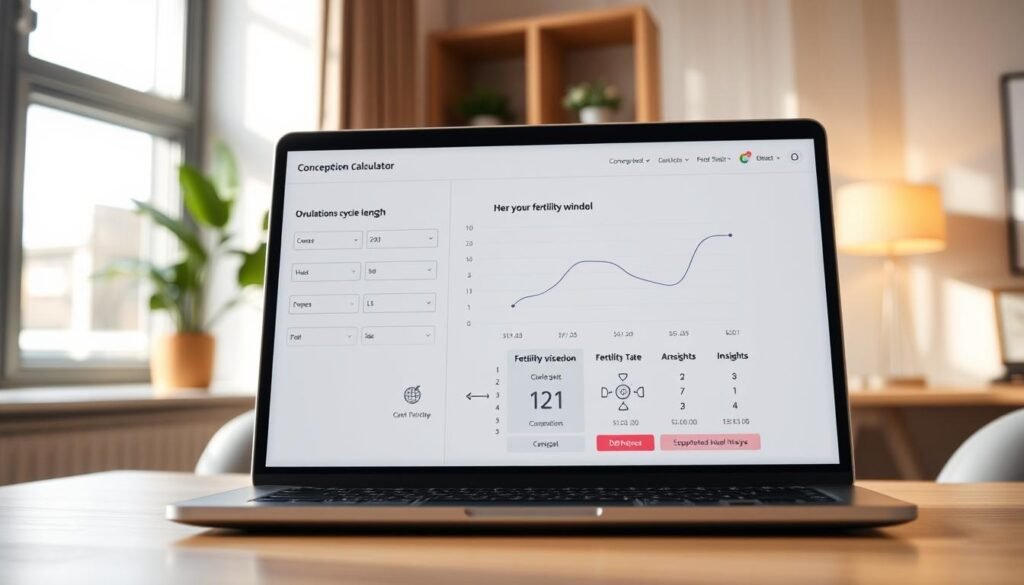
With your ovulation date, you can determine your conception date and subsequent due date. This method is particularly useful for women who have been tracking their ovulation symptoms or using ovulation predictor kits.
Tracking Ovulation Symptoms
Common ovulation symptoms include changes in basal body temperature, cervical mucus consistency, mild cramping, and increased libido. By tracking these symptoms, you can identify when ovulation occurs.
Using Ovulation Predictor Kits
Ovulation predictor kits detect the luteinizing hormone (LH) surge that precedes ovulation by 24-36 hours. This provides a more precise indication of when ovulation is about to occur.
Calculating Conception from Ovulation
Conception typically occurs within 24 hours of ovulation. By knowing your ovulation date, you can estimate your conception date. To calculate your due date, simply add 266 days to your ovulation date.
Using a conception calculator with a known ovulation date offers several advantages, especially for women with irregular cycles or those actively tracking their fertility. This method provides a more accurate estimation of conception and due dates compared to calculations based on the last menstrual period.
Conception Calculation for IVF Pregnancies
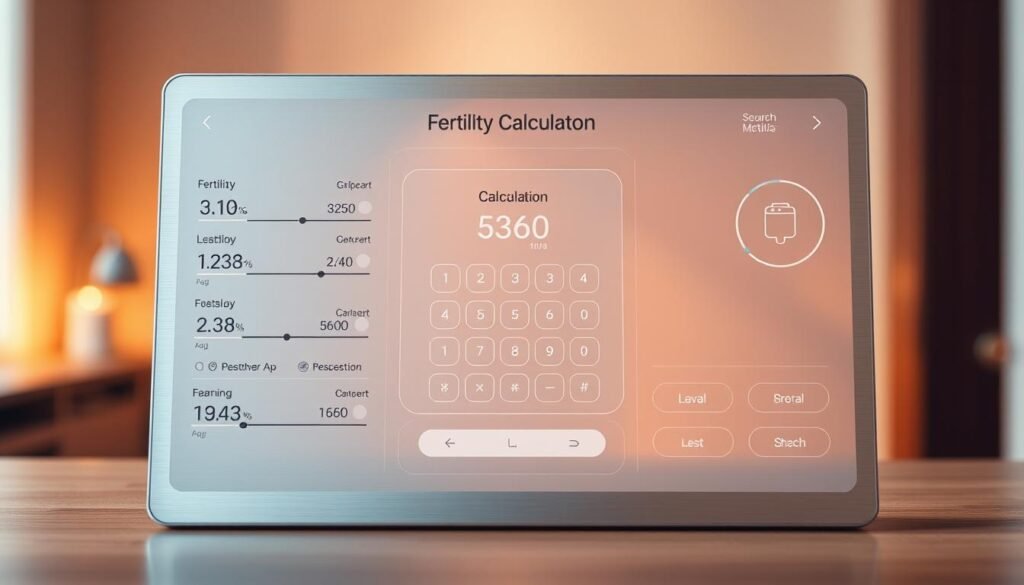
When conception occurs through IVF, the date of fertilization is known with great accuracy. This precision is due to the controlled laboratory conditions under which fertilization takes place. IVF conception date calculators utilize this information to estimate due dates.
Day 3 vs. Day 5 Embryo Transfers
The stage of embryo development at transfer affects conception date calculations. Most embryo transfers occur either three or five days after egg retrieval and fertilization. For a day-three transfer, you count 263 days from the transfer date to calculate your due date. For a day-five transfer, you count 261 days.
Special Considerations for IVF Conception Dating
IVF pregnancies differ from natural conceptions in that the exact date of fertilization is known. This allows for more precise due date estimation. Additionally, frozen embryo transfers, which may have been created weeks or months before implantation, require special consideration. Healthcare providers often use both transfer date information and ultrasound measurements to monitor and date IVF pregnancies.
Using Ultrasound Data to Determine Conception
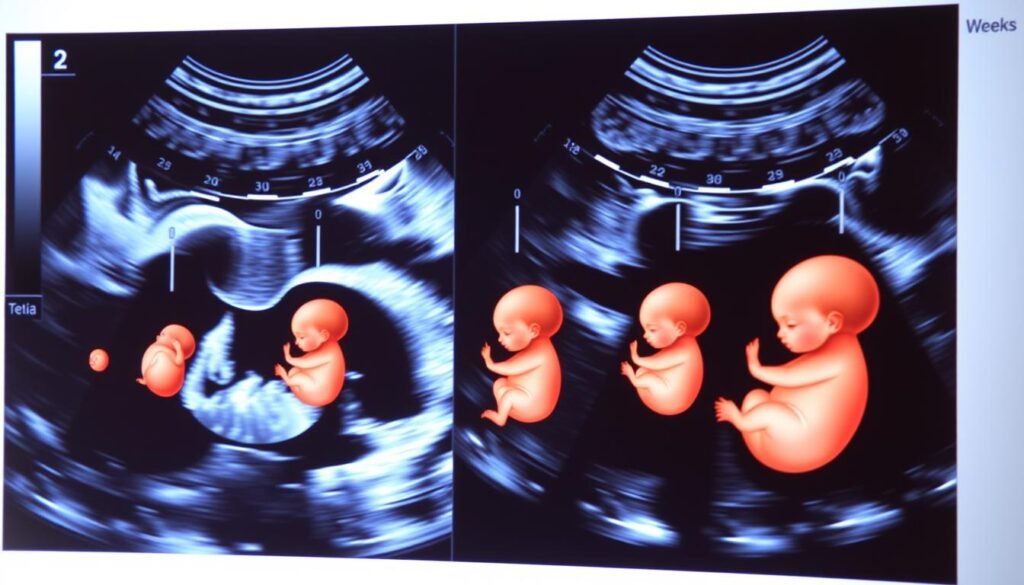
Ultrasound measurements offer a reliable method for estimating conception dates. An ultrasound uses sound waves to create images of internal body structures, and in the context of pregnancy, it’s referred to as an “obstetric ultrasound.”
First Trimester Ultrasound Dating
During the first trimester, ultrasounds can measure fetal parameters like crown-rump length to determine gestational age with an accuracy of within 3-5 days. This method is particularly useful because fetal growth is more predictable during this period.
Converting Gestational Age to Conception Date
To calculate the conception date from ultrasound-determined gestational age, we typically subtract 14 days to account for the pre-ovulation period. This method provides a more accurate due date and helps in understanding the pregnancy timeline.
When Ultrasound Dates Differ from LMP Calculations
Sometimes, ultrasound dates may differ from those calculated using the last menstrual period (LMP). This discrepancy can occur due to irregular cycles, mistaken period dates, or early pregnancy bleeding. Healthcare providers often favor first-trimester ultrasound measurements when there’s a significant difference.
Common Questions About Conception Calculation
Many expectant parents have questions about conception calculation, seeking clarity on the process. Conception date calculation is a complex topic, and understanding it can help alleviate some of the uncertainties associated with pregnancy.
Can You Plan Your Conception Date?
Planning a conception date involves timing intercourse around ovulation. While it’s possible to estimate ovulation, the exact timing can be unpredictable. Sperm viability adds another layer of complexity, as sperm can survive inside a woman’s body for up to five days.
Why Your Conception Date Might Change
Your calculated conception date might change during pregnancy, especially if ultrasound measurements suggest a different gestational age than initially calculated. This discrepancy can occur due to variations in fetal development or the timing of ovulation.
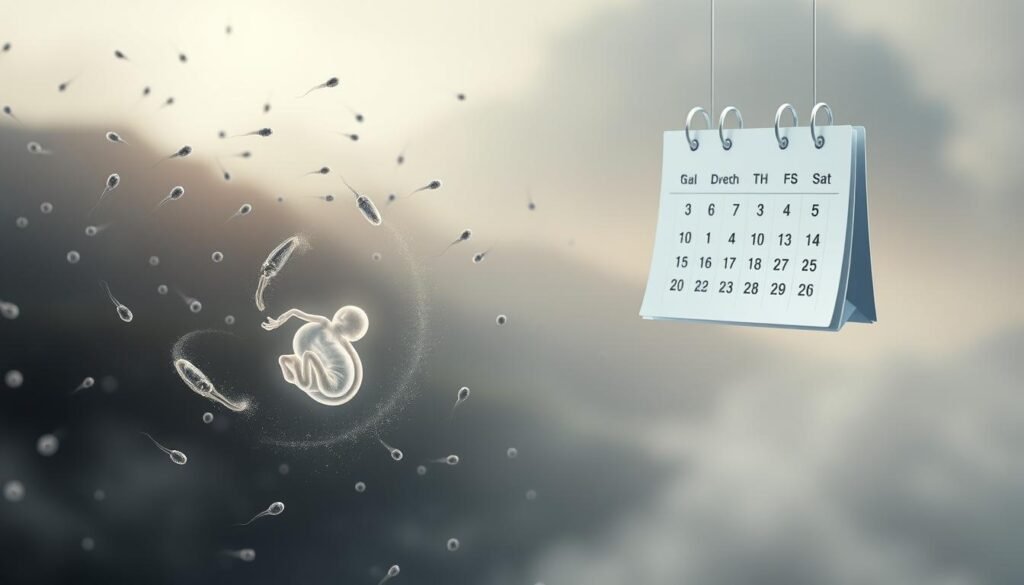
Conception Date vs. Pregnancy Test Timing
Pregnancy tests detect the presence of human chorionic gonadotropin (hCG) in the body. Most home tests won’t detect pregnancy until at least 10-14 days after conception. Blood tests, however, can detect pregnancy as early as six to eight days after ovulation.
Understanding the Fertile Window
The fertile window refers to the roughly six-day period each cycle when pregnancy is possible. Identifying this window involves tracking ovulation symptoms, using ovulation predictor kits, or monitoring menstrual cycles.
Understanding these aspects of conception can help women and their partners better plan for pregnancy and appreciate the complexities involved in calculating a due date and anticipating the birth of their baby.
Conclusion
As we conclude our exploration of conception calculators, it’s clear that understanding your conception date is a valuable aspect of your pregnancy journey. We’ve discussed various methods for calculating conception dates, including using your last menstrual period, known ovulation dates, IVF transfer dates, and ultrasound measurements.
While conception calculators provide estimates, they can be remarkably accurate with the right information. Understanding your conception date is crucial for medical purposes, personal planning, and connecting emotionally with your pregnancy. It’s essential to remember that pregnancy dating isn’t an exact science, and slight variations in calculations are normal.
Expectant parents should discuss any discrepancies with their healthcare providers and focus on maintaining a healthy pregnancy. Knowing your conception date can be fascinating, but the ultimate focus should be on the joy of expecting a baby and preparing for their birth.
FAQ
How accurate are conception date calculations?
Conception date calculations are generally accurate, but their precision depends on various factors, including the regularity of our menstrual cycle and the method used to determine the conception date.
Can I use a conception date to determine my due date?
Yes, knowing our conception date can help estimate our due date. However, it’s essential to note that due dates can be influenced by multiple factors, including the length of our menstrual cycle and the accuracy of our conception date.
How do I calculate my conception date using my last menstrual period (LMP)?
To calculate our conception date using LMP, we typically count back 2 weeks from the first day of our last period, assuming a regular 28-day menstrual cycle. However, this method may not be accurate for everyone, especially those with irregular cycles.
What if I have an irregular menstrual cycle? Can I still use a conception date calculator?
Yes, but the accuracy might be affected. We can still use a conception date calculator, but it’s crucial to understand that the result may not be as precise as it would be for someone with a regular cycle.
How does IVF affect conception date calculations?
For IVF pregnancies, the conception date is typically determined by the date of embryo transfer. The type of transfer, such as day 3 or day 5, can impact the calculation.
Can ultrasound data be used to determine conception date?
Yes, ultrasound data, particularly from the first trimester, can be used to estimate gestational age and, subsequently, conception date. However, there might be discrepancies between ultrasound dates and LMP calculations.
What is the fertile window, and how does it relate to conception?
The fertile window refers to the period during which we can conceive, typically 5-7 days leading up to ovulation and the day of ovulation itself. Understanding our fertile window can help us plan conception.
Can I plan my conception date?
While we can’t precisely plan our conception date, understanding our menstrual cycle and fertile window can increase our chances of conceiving during a specific time frame.
For More Tools: Click Here

